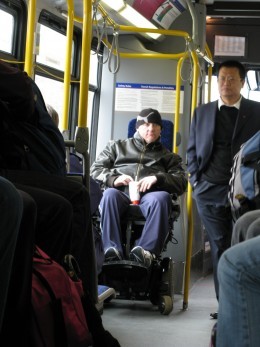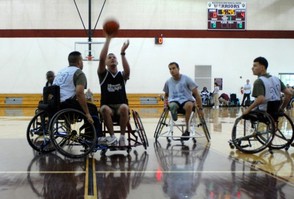The Americans with Disabilities Act was signed into law on July 26, 1990. The purpose of the law is to provide opportunities for people with disabilities, both in employment and leisure, by removing barriers and prohibiting discrimination. Places of employment and business, offices and other public places, must provide reasonable accommodations to persons with disabilities.
This involves many things and the law can be intricate. It applies to buildings constructed after the law took effect, but even owners of buildings built before the act must make modifications that are practical and financially feasible. Also, any accommodation that is possible must be met. This could be as simple as an employee of a store getting an item off a shelf for a person in a wheelchair.
Featured image: Australian Paralympic Committee [CC BY-SA 3.0 (http://creativecommons.org/licenses/by-sa/3.0) or CC BY-SA 3.0 (http://creativecommons.org/licenses/by-sa/3.0)], via Wikimedia Commons
Part of the requirements outlined in the ADA deals with wheelchair ramps. Wheelchair ramps installed at places of public accommodation must meet certain guidelines to ensure they are safe and usable.






 Why Are My Veins So Visible?on 07/15/2020
Why Are My Veins So Visible?on 07/15/2020
 Should Female Backpackers Go on their Own? Why or Why Not?on 07/15/2020
Should Female Backpackers Go on their Own? Why or Why Not?on 07/15/2020
 Why Do BPD Women Lie?on 07/15/2020
Why Do BPD Women Lie?on 07/15/2020
 Why Do My Joints Hurt?on 07/15/2020
Why Do My Joints Hurt?on 07/15/2020


Comments
Yeah, I've seen places that are not even accessible. Mostly places are in compliance but you do see many that are not.
I have seen many violations, especially the slope. And, er have a ramp at work that was altered the point of no longer being in compliance, At the same time many ramps on the stret have vertical sides that pose a tripping hazard to those not in a wheelchair, and could have gradual sloped sides instead.